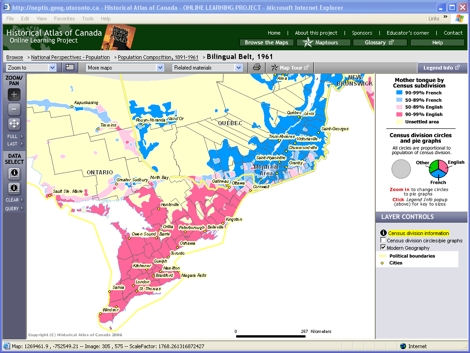 |
Try This:
- On the Browse topbar, click on “Population Composition, 1891-1961”
to return to the chapter page. Then open the map “The Bilingual Belt, 1961.”
- Under LAYER CONTROLS, turn on
the checkbox for "Modern Geography."
- Use the Zoom-in tool to zoom in to Southern Ontario and Québec,
including the area from Sault Ste. Marie and Kapuskasing to Québec City.
|



